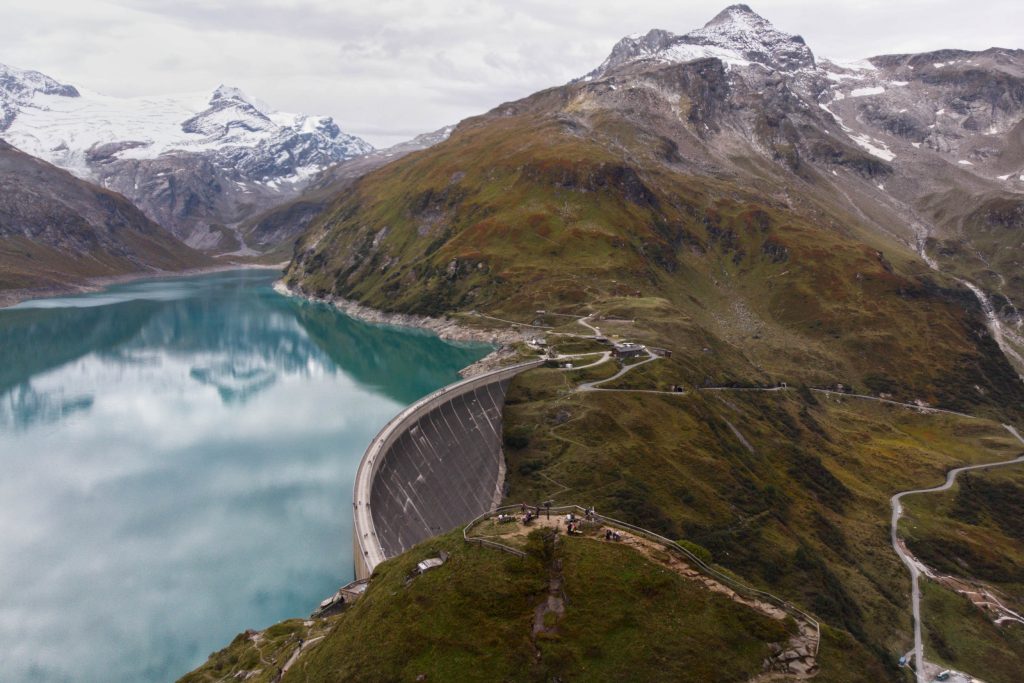Dams are vital structures that function in regulating the flow of water and storing large quantities of water. Proper monitoring of the condition of the dam is very important to prevent potential hazards and ensure the sustainable use of water resources. One of the crucial components in the dam monitoring system is the pressure sensor. This article will explain the benefits of pressure sensors in dam monitoring, their working principle, and the location of the sensor installation.

How Do Pressure Sensors Work?
The pressure sensor works on the principle of changing the resistance or capacitance that is generally used. Resistance sensors experience a change in resistance value as pressure changes, while capacitance sensors change capacity in response to pressure. The pressure sensor is connected to a measuring system that converts changes in resistance or capacitance into readable pressure values.
The pressure sensor is usually equipped with a membrane that is sensitive to changes in pressure. When the water pressure increases, the membrane will deform and produce a change in the electrical signal inside the sensor. This electrical signal is then converted to a pressure value that can be understood by the monitoring system.
Pressure sensors are generally installed at several important locations in the dam. Some of the installation places that are often used include:
- Sluice Gate: Pressure sensors can be installed at the sluice gate to monitor the pressure when the sluice is opened or closed. This helps in controlling the flow of water and maintaining the stability of the dam.
- Outlet: A pressure sensor can be installed in the outlet to monitor the pressure as water is discharged from the dam. This information is important to regulate the flow rate and prevent excess pressure from occurring which has the potential to damage the dam structure.
- Packing Tanks: Pressure sensors are also often installed in packing tanks, where water is collected and pressurized before being conveyed into a line or pipe. Installation of a pressure sensor here helps in monitoring the pressure required for efficient distribution of water.
- Sinking chambers: Pressure sensors can be installed in sink chambers or submerged chambers in dams. This allows monitoring of water pressure in areas that may be physically difficult to reach.
- Reinforcing Structures: Pressure sensors can also be installed in bracing structures or other important parts within the dam. Installing sensors here helps in monitoring stresses and deformations in structures to identify potential damage or weakness.
Utilization of pressure sensors in dam monitoring helps improve dam safety, performance and sustainability. By continuously monitoring the water pressure, abnormal changes can be detected quickly, and preventive measures can be taken before serious damage occurs. In addition, data collected by pressure sensors can also be used to optimize water flow settings more efficiently and control water quality in the dam.
In the digitalization era, pressure sensors are increasingly integrated with intelligent monitoring systems. The data collected by the sensors can be sent in real-time to the control center, where data analysis and decision making can be carried out effectively. This allows for a fast and appropriate response to changing dam conditions.
Overall, pressure sensors play an important role in dam monitoring. By monitoring water pressure and collecting accurate data, pressure sensors help keep dam structures safe, detect leaks, predict potential flooding, and control water quality. With a good understanding of the use and working of pressure sensors, we can increase the efficiency and sustainability of dam management for the benefit of the community and the surrounding environment.
What are the Benefits of Installing a Pressure Sensor on a Dam?
Installing a pressure sensor on a dam has significant benefits, including:
- Safety Monitoring: Pressure sensors help in the monitoring and detection of potential hazards in the dam. By continuously monitoring the water pressure, abnormal changes can be detected quickly, enabling proper preventive action before serious damage or structural failure of the dam occurs.
- Water Discharge Control: The pressure sensor helps in regulating the water flow efficiently. By monitoring the water pressure in the sluice, outlet, or packing tank, pressure sensors can provide the information needed to adjust the water flow as needed, preventing overpressure that could damage dams.
- Leak Detection: Pressure sensors can detect leaks in dams. Abnormal pressure changes can indicate a leak in the structure or pipes connecting the dam. By detecting leaks early, corrective action can be taken to prevent more serious damage.
- Flood Potential Prediction: By monitoring the water pressure and monitoring for significant changes, the pressure sensor can assist in predicting the potential for flooding. The information collected by the pressure sensor can be used to estimate the increase in water discharge and take the necessary preventive action.
- Water Quality Control: Pressure sensors can also help in controlling the water quality in a dam. By monitoring the water pressure, significant changes in water quality such as a drop in pressure or changes in certain parameters can be detected. This makes it possible to take the necessary actions to maintain safe water quality and comply with requirements.
With the proper installation of pressure sensors, dams can be better monitored, ensuring the safety, performance and sustainable management of water resources.

